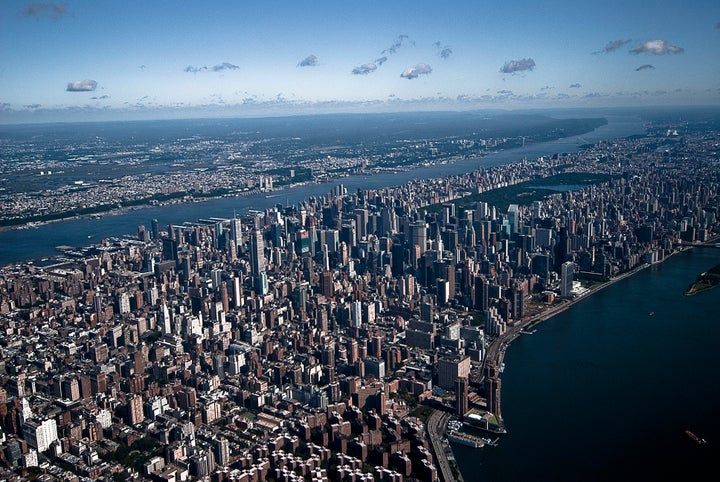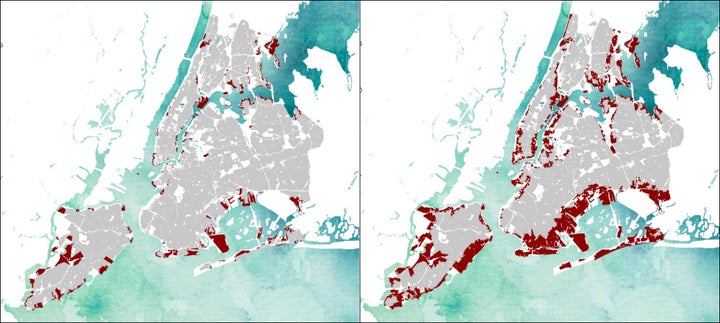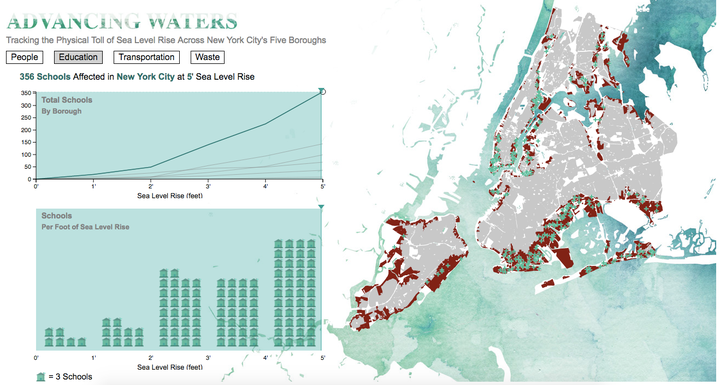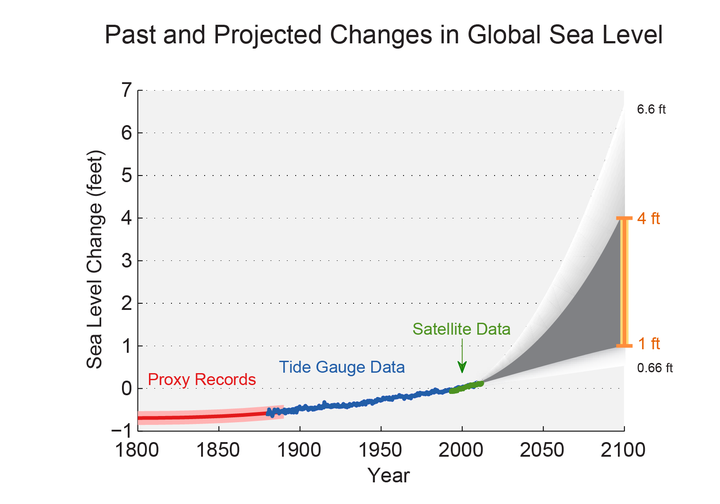
Sea levels could rise several feet by the end of the century, devastating coastal communities around the world. Yet while it's critical to understand the risk before it’s too late, it's not always easy to visualize it.
To address that conundrum, interactive maps from the data and design firm Landscape Metrics let you see how different degrees of sea level rise would affect New York City residents and infrastructure. “Advancing Waters: Tracking the Physical Toll of Sea Level Rise Across New York City's Five Boroughs” was published last month.
As the visualization shows, the results could be dramatic. If sea levels rise 1 foot, a little under 170,000 New Yorkers will be affected, as well as 93 schools, waste treatment facilities and transportation facilities like subway yards and bus depots. But if ocean levels rise 5 feet, nearly 1,500,000 residents will find their homes -- as well as about 800 education, waste and transportation sites -- underwater.

[Use Landscape Metrics’ tool to see all the variations.]
“Part of why climate change can be easy to ignore is because it’s so abstract,” said Benjamin Wellington, one of Landscape Metrics’ three co-founders. “It happens slowly over a long period of time. It usually isn’t really legible until something catastrophic happens.”
The “Advancing Waters” maps make the impact of climate change feel more tangible, Wellington and co-founder Matthew Seibert said. They wanted to build on existing maps showing how sea level rise would affect land to demonstrate its impact on residents.
“It’s not just simply bringing in the edges of the city,” Wellington said. “It means moving hundreds of thousands of people, hundreds of schools, hundreds of facilities. … It means displacement of the things that make up the fabric of the city.”

Landscape Metrics looked at transportation and waste management facilities that serve residents citywide to show that rising sea levels affect more than a neighborhoods that floods.
They used 2010 Census population figures and New York City's Selected Facilities and Program Site database to track different sites, and pinpointed which areas of the city would be underwater using the National Elevation Dataset.
Wellington noted several limitations: The census blocks they used to map population won’t have uniform levels of flooding, and elevation levels can be imprecise. But the projections offer a glimpse at a few potential futures and show a range of outcomes.
The world’s oceans are getting warmer in part because they absorb atmospheric heat related to human emissions, according to the 2014 National Climate Assessment, a federal report on the impact of climate change. As water heats up, it expands, contributing to sea level rise. Melting glaciers and ice sheets also contribute.
Sea level rise is accelerating, the NCA says, and current projections suggest oceans could rise between 1 and 4 feet by 2100. Some experts predict a wider range, between 8 inches and 6 feet. According to The Washington Post, a recent study suggests melting ice in Antarctica will contribute more to sea level rise than was previously accounted for, shifting the high end of the estimate above 6 feet.
“Under the high-emissions scenario, the 22nd century would be the century of hell,” Ben Strauss, a sea level rise expert, told the Washington Post in March. “It would erase many major cities and some nations from the map.”

In December, diplomats in Paris settled on a climate change agreement that set a cap on global warming, with pledges to reduce emissions. Combatting sea level rise is one of the goals of the agreement.
New York City has its own plans to tackle climate change and the effects of sea level rise. Since Hurricane Sandy in 2012, which caused massive devastation in New York and New Jersey, the city has put money and manpower to toward a range of projects, including protections for shoreline communities that are vulnerable to flooding.
“[Sea level rise] isn’t happening overnight. It’s happening over 50, 100 years, so there’s a huge capacity for adaptation,” Wellington said.
“What it’s going to take is ... mobilizing the people to kind of care about the situation, and to then engage their local officials to actually make real tangible action,” Seibert added.
H/T CityLab

